17 Nights / 18 Days

18 Day Tour Through India’s Golden Triangle and a Nepal Trek! Covering Delhi-Jaipur-Agra-Varanasi-Delhi-Kathmandu-Phedi-Dhampus-Sarangkot-Pokhara -Kathmandu.Tips, laundry, telephone bills, luggage handling and Beverages.
Meals unless specified
Any monument entrance tickets
Personal equipment and clothing
Lunch & dinner in Kathmandu, Pokhara and trekking days. (Meal costs about 4 – 6 dollar per item depending on place where you eat)
City sightseeing entry fee in Kathmandu
On arrival at Delhi airport or railway station, our representative will meet you to pick you up and transfer to your hotel. Rest of the day is at your leisure. Stay overnight at the hotel in Delhi.
Early morning after breakfast proceed to sightseeing tour of Delhi Visit
Red Fort:-Delhi’s most famous monument, the Red Fort, stands as a powerful reminder of the Mughal emperors who ruled India. Its walls, which stretch for over two kilometers (1.2 miles), were built in 1638 to keep out invaders. However, they failed to stop the fort being captured by the Sikhs and the British. To take your imagination back to the ancient era, a one hour sound and light show of the fort’s history is held each evening.
(*Red Fort is closed on Every Monday)
Jamia Masjid:-Jama Masjid is another marvelous treasure of the Old City, and is the largest mosque in India. Its courtyard can hold an incredible 25,000 devotees. The mosque took 13 years to build, and was completed in 1650. A strenuous climb to the top of its southern tower will reward you with a stunning view across the rooftops of Delhi. Be sure to dress appropriately when visiting the mosque or you won’t be allowed in. This means covering your head, legs and shoulders. Attire is available there.
ChandniChowk:-ChandniChowk, the main street of old Delhi, is a shocking contrast to the wide, orderly streets of New Delhi. Cars, cycle rickshaws, hand-pulled carts, pedestrians, and animals all compete for space.
Humayun’s Tomb:-If you think Humayun’s Tomb looks a bit like the TajMahal in Agra, that’s because it was the inspiration for the TajMahal’s creation. The tomb was built in 1570, and houses the body of the second Mughal emperor, Humayun. It was the first of this type of Mughal architecture to be built in India, and the Mughal rulers followed it up with an extensive period of construction all over the country. The tomb is part of a greater complex that’s set amongst beautiful gardens.
Qutub Minar:-QutabMinar, the tallest brick minaret in the world, is an incredible example of early Indo–Islamic architecture. It was built in 1206, but the reason remains a mystery. Some believe that it was made to signify victory and the beginning of Muslim rule in India, while others say it was used to call the faithful to prayer. The tower has five distinct stories, and is covered with intricate carvings and verses from the holy Quran. There are also a number of other historic monuments on the site.
Lotus Temple:-The Bahai Temple is commonly referred to as the Lotus Temple, as it’s shaped like a lotus flower. It’s particularly pretty at night, when it’s attractively lit up. Made out of white marble, the temple belongs to the Bahai Faith, which proclaims the unity of all people and religions. Everybody is welcome to worship there. The tranquil gardens and ponds surrounding the temple are also a great place for a relaxing picnic. (*Lotus Temple is closed on Every Monday)
India Gate:-The towering archway of India Gate at the center of New Delhi is a war memorial, built in memory of the Indian soldiers who lost their lives fighting for the British Army in World War I. At night it glows warmly under floodlights, and the gardens that line its boulevard are a popular place to enjoy a warm summer’s evening.
After breakfast proceed to Jaipur. On Arrival Start sightseeing tour of Jaipur.
City Palace:-situated in the heart of the old City, it occupies about one seventh of the old city area. The palace is a blend of Rajput and Mughal architecture, it houses a Seven storeyed Chandra Mahal in the centre, which affords a fine view of the gardens and the city. Diwan-E-Am (Hall of public audience) has intricate decorations and collection of manuscripts, Diwan-E-Khas (Hall of private audience) has a marble pawed gallery Mubarak Mahal has a rich collection of costumes and textiles. There is a Clock Tower near Mubarak Mahal. SilehKhana has a collection of armory and weapons.
JantarMantar:-built in 18th century by Maharaja Sawai Jai Singh II, the huge masonary instruments were used to study the movement of constellations and stars in the sky. Enormous sun-dial still provides accurate time, which is subject to daily corrections.
HawaMahal:-built in 1799, by Maharaja SawaiPratap Singh, is the most recognizable monument of Jaipur. The 5 storied stunning semi-octagonal monument having 152 windows with over hanging latticed balconies is a fine piece of Rajput architecture. Originally designed for the royal ladies to watch and enjoy the processions and other activities, on the street below. Now it houses a well laid out museum. The display “Jaipur past and present” is the special feature of this newly setup museum
Albert Hall Museum:- Situated in the Ram Niwas Garden. It has a rare collection of archaeological and handicraft pieces.
Early morning after breakfast proceed to sightseeing tour of Jaipur:
Amer Fort:-The old capital of the Kachhwahas stands atop a range of craggy hills. The fort is remarkable as much for the majestic grandeur of its surroundings as for its sturdy battlements and beautiful palaces. It is a fine blend of Hindu and Muslim architecture. The solemn dignity of it red sandstone and white marble pavilions, when reflected in the lake at the foot hill, is a sight to behold. The original palace was built by Raja Man Singh, the additional extensions were built by Maharaja Mirja Raja Jai Singh and Sawai Jai Singh lIthe last Maharaja of Amer, who built a new city called Jaipur, where he shfted his capital in 1727.
The palace complex is lavishly ornamented and displays the riches of Amer. Sheesh Mahal chamber of Mirrors. Diwan-e-Am or the Hall of Public Audience is a beautifully proportioned hall open on three sides and stands on two rows of ornamented pillars. Diwan e-Khas or the Hall of Private Audience has delicate mosaic work in glass. Sukhmandir is guarded by sandalwood doors inlaid with ivory.
JalMahal:-On the way to Amer, this small palace is set in the middle of Man Sagar Lake. Renovation around the lake is in progress.
Evening free for shopping in Pink city market. Later return to the hotel. Stay overnight at Hotel in Jaipur.
After breakfast proceed to Agra visit en-route at:
FatehpurSikri:-Built by Akbar, the Mughal emperor in 1570, the city was a tribute to Sufi Saint. FatehpurSikri is a perfect blend of Indian, Islamic and Persian architecture and it was built using red sandstone. For around 10 years, the city remained the capital of Mughal Empire. The city has a 6-kilometer long wall on three sides and there are towers and gates. It houses some of the city’s important buildings namely BulandDarwaza, Birbal’s House, PanchMahal and Jama Masjid. The entire city along with all the important constructions including royal palaces, Jama Masjid and courts were declared as World.
Or either can visit to:
Abhaneri is a village in the Dausa district of Rajasthan state in India. It is situated at a distance of 95 km from Jaipur, on the Jaipur-Agra road. The place is popular for the Chand Baori step well and Harshat Mata Temple.
After breakfast start sightseeing in Agra and visit to:
TajMahal:-You cannot think of Agra without thinking of TajMahal. Or, you might not have thought of Agra were it not for the monument of love. TajMahal, the white marble beauty was constructed by Shah Jahan in memory of his beloved wife, MumtazMahal. The monument stands proof for the brilliance of Mughal architecture. Named as one of the wonders of the world, Taj Mahal stands the test of time. It has been declared as World Heritage Site in the year 1983. It is a feast to your eyes and senses to watch the unmatched beauty on the night of full moon day. (*Taj Mahal Closed on every Friday)
Agra Fort :-You would regret if you miss Agra Fort during your visit to Agra. The 16th century monument is yet another proof of the architectural brilliance of Mughals. This is situated near the gardens of the world famous TajMahal. Called the Red Fort of Agra, you will be awe inspired by the powerful fortress. The fortress comprises many palaces namely, Jahangir Palace, KhasMahal and so on. There are audience halls and two mosques. The entire fortress is a symbol of Mughal’s grandeur. It was in Agra Fort Shah Jahan was held prisoner by Aurangazeb, his son. Shah Jahan, the emperor, spent his last days here viewing the monument of love he had built for his wife.
Afternoon lunch you free check out from hotel and wait at hotel lobby, evening transfer to train station to board the train for Varanasi. Overnight Journey in Train Aircon sleeper coach. (2AC Coach)
Upon arrival in Varanasi train station you will be meeting with our tour manager and later transfer to your hotel. Check-in to the hotel take rest. Afternoon visit to:
Annapoorna Devi Temple:-Annapurna or Annapoorna is the Hindu Goddess of nourishment. Anna means food and grains. Purna means full, complete and perfect. She is form of Parvati, the consort of Shiva. The most well-known temple dedicated to Goddess Annapurna is in Varanasi, U.P., India. Adjacent to the Sanctum of the Goddess is the KasiViswanath temple. The two are separated by only a few yards. Annapurna is regarded as the queen of Varanasi alongside her husband Vishweshwar (Shiva), the King of Varanasi. In the temple, at noon time, food offerings to the Goddess are distributed to the elderly and disabled daily. During the Autumn Navaratri food is distributed on a larger scale.
AssiGhat:-AsiGhat, the Ghat located at the confluence of Assi River and the holy Ganges, is the southernmost Ghat in Kashi. The Ghat is renowned for a spectacular and large Shiva Lingam placed under a Peepal Tree. This is a favorite spot for Hindu devotees to offer their prayers to Lord Shiva after taking holy dip in the river. This religiously important place got its reference in many puranas, including MatsyaPurana, KurmaPurana, Agni Purana and Padma Purana. Legendary stories describe this Ghat as the place where GoodessDurga thrown out her sword after killing the Asura demons Shumbha- Nishumbha.
DashaswamedhGhat,:-DashaswamedhGhat, a much acclaimed religious spot, is a very favorite among the Hindu devotees and is considered as the main Ghat. It is believed that Lord Brahma performed his victorious Dasa_Ashwamedha (ten-horses) sacrifice in this spot. Legends claim that a similar kind of ten horse sacrifice was done here in the second century by Bhara Shiva Naga rulers.
The Ghat was renovated by BajiraoPesava I in 1740 AD and later by the Queen of Indore, the princess AhilyabaiHolkar in 1774. This place attracts huge inflow of tourist everyday. DashaswamedhGhat has credited with many religious temples and destinations nearby. This is one of the safe ghats with well laid steps and perfect platforms for the devotees to perform the rituals.
KashiVishwanathTemple :-KashiVishwanath Temple is one of the most famous Hindu temples dedicated to Lord Shiva and is located in Benaras, the Holiest Place of Hindus (and center of earth in Hindu Cosmology) where at least once in life a Hindu is expected to do pilgrimage and if possible pour the remains (ashes) of cremated ancestors here on the River Ganges.
The temple stands on the western bank of the holy river Ganges, and is one of the twelve Jyotirlingas, the holiest of Shiva temples. The main deity is known by the name Vishwanatha or Vishweshwara meaning the Ruler of the universe. The temple town that claims to be the oldest living city in the world, with 3500 years of documented history is also called Kashi and hence the temple is popularly called as KashiVishwanath Temple.
Wake up early morning at sunrise time visit to the Ghat for Boat ride on Ganges. Later back to the hotel take breakfast and rest at hotel. In afternoon visit to:
Sarnath is the main place to visit while on tour around Varanasi. A much sacred pilgrimage and tourist spot in country. Sarnath is only 10 km away from Varanasi. It is one of the four most significant Buddhist pilgrimage places in India; Sarnath is the place where Lord Buddha first covey his lecture after attaining “nirvana”.
Sarnath Buddhist Temple:-There are a number of twentieth century Buddhist temples in Sarnath. Many of these Buddhist temples at Sarnath are built and maintained by monks from Tibet, China and Japan but the main Buddhist temple is the MulagandhakutiVihar. The main shrine (vihara), called the Mulagandakuti, is said to be located at the place where Buddha used to stay during his visits to Sarnath. There is a carved sandstone railing inside the temple. In the MulagandhakutiVihara there also is a Buddha walk.The recent ‘MulagandhakutiVihara’ or the modern Buddhist temple is 110 feet high with an image of Buddha inside it. Buddhist relics discovered at Taxila are enshrined in this ‘MulagandhkutiVihara’. There are also fine paintings on the walls of this temple by Japanese artist KosetsuNosu. Buddhist services are conducted there. Besides the MulagandhakutiVihara temple there are Chinese, Burmese and Jain temples nearby.
Sarnath Museum:-Sarnath has yielded a rich collection of sculptures, artifacts and edifices comprising numerous Buddha and Bodhisattva images and other ancient remains. To house all the findings and excavations at Sarnath, the Archaeological Survey of India established a site Museum at Sarnath. Finest specimens of Buddhist art and other important remains have been housed at the museum.
While the single most famous exhibit of this museum is the Lion Capital of Asoka, the Sarnath museum has a small but awe-inspiring collection of Buddhist artifacts. Among the things to see is a beautiful sculpture of the Buddha from the fifth century. The Buddha sits cross-legged, with eyes downcast in deep meditation, and a halo around his head. Also worth exploring are several beautiful figures of the bodhisattvas. The main attraction of the Sarnath Archaeological Museum is the superb Ashokan Pillar. It has four back-to-back lions, which has been adopted as the National symbol of India. Below this are representations of a lion, an elephant, horse and the bull.
Pillars of Ashoka:-The pillars of Ashoka are a series of columns dispersed throughout the northern Indian subcontinent, erected or at least inscribed by the Mauryan king Ashoka during his reign in the 3rd century BCE. Originally, there must have been many pillars but only nineteen survive with inscriptions. Many are preserved in a fragmentary state. Averaging between forty and fifty feet in height, and weighing up to fifty tons each, all the pillars were quarried at Chunar, just south of Varanasi and dragged, sometimes hundreds of miles, to where they were erected.
Day is free for personal activities. Afternoon transfer to airport in Varanasi to catch the flight for Delhi. Upon arrival in Delhi representative will pick you and transfer to the hotel. Overnight stay in Delhi Hotel.
In this day transfer to Airport for flight to Nepal. After Arrival at Tribhuwan International Airport transfer to hotel, at evening the orientation will be at the Kathmandu hotel after arrival and at evening welcome dinner with cultural show with dances and singing from different ethnic groups and cast of Nepalese community with Nepalese dinner.
Morning yoga and after breakfast full day sightseeing of Kathmandu valley, Kapon Monastary or Pashupatinath Temple, Boudhanath Stupa, Swaymbhunath Stupa and Patan Durbar Square. Stay overnight at Holy Himalaya.
Morning yoga and Kathmandu to Pokhara by flight (30 Minutes) and transfer to hotel. Stay overnight at Hotel.
Pokhara to Phedi by private transportation and trek to Dhampus. A stunning view of Machhapuchhre including entire panorama of Annapurna can be witnessed with sunset and sunrise. Stay overnight at Guest House
Trek to Australian camp (2-3 hours) and stay overnight at Guest House.
Trek to Sarangkot (5-6 hours). Sarangkot is the place from where we can see the sunset and sunrise and magnificent view of mountains. Stay overnight at Guest House.
Embark on a 2-3 hours walk from Sarangkot to Pokhara or paraglide (paragliding is an optional). Then enjoy a sightseeing tour in Pokhara and visit David’s fall, Gupteswor cave, Bindyabasini temple and one hour boating in Phewalake. Stay overnight
After breakfast, drive or fly (flight is optional which can be booked on your request) back to Kathmandu. After arrival at hotel
Enjoy morning yoga after breakfast transfer to airport for your departure.
We are Tour Operator based in Delhi Having Network all Over Country. Read More...
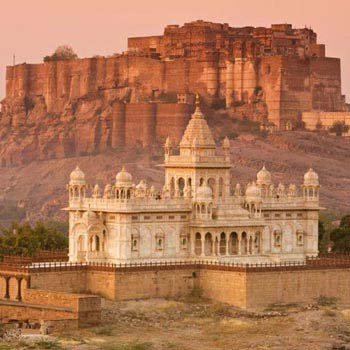 6D/5N
6D/5N
Rajasthan Heritage & Culture Tour Package
Udaipur - Jodhpur - New Delhi - Jaipur
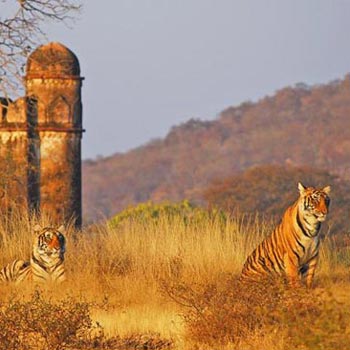 4D/3N
4D/3N
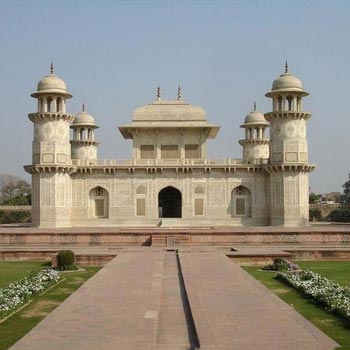 3D/2N
3D/2N
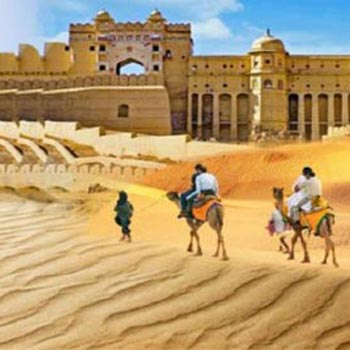 3D/2N
3D/2N
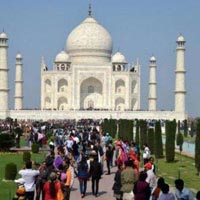 7D/6N
7D/6N
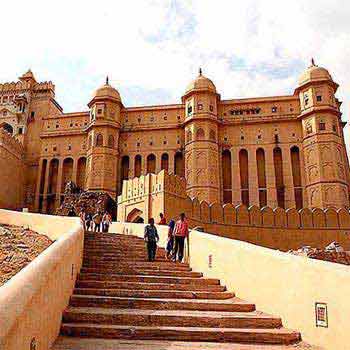 15D/14N
15D/14N
Luxury 15 Days Golden Triangle with Vara..
New Delhi - Jaipur - Pushkar - Ranthambore - Varanasi
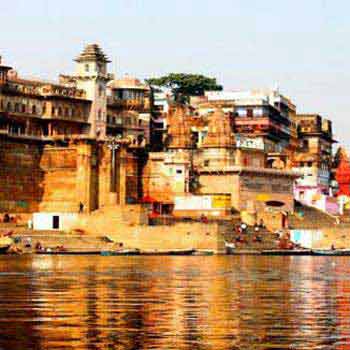 11D/10N
11D/10N
Luxury 11 Days Golden Triangle with Vara..
New Delhi - Jaipur - Agra - Varanasi
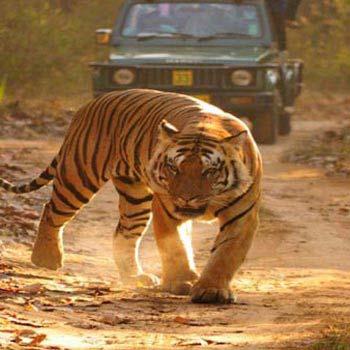 10D/9N
10D/9N
Luxury 10 Days Golden Triangle & Rantham..
New Delhi - Jaipur - Pushkar - Ranthambore - Agra
 7D/6N
7D/6N
 18D/17N
18D/17N
Best of North & West India with Nepal Tour
Mumbai - Kathmandu - New Delhi - Jaipur - Fatehpur Sikri - Agra - Jhansi - Varanasi..
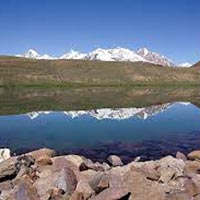 18D/17N
18D/17N
Kalpa - Nako - Sarahan - Lake - Tabo - K..
Kalpa - Tabo - Kaza - Dharamshala - New Delhi - Chandigarh - Mcleodganj
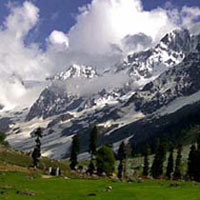 18D/17N
18D/17N
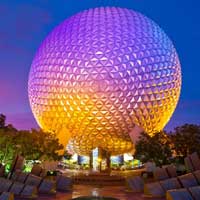 18D/17N
18D/17N
Ultimate USA with Bahamas Cruise Tour
San Francisco - Los Angeles - Las Vegas - Pennsylvania - New York - Orlando - Monte..
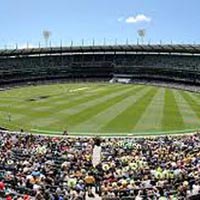 18D/17N
18D/17N
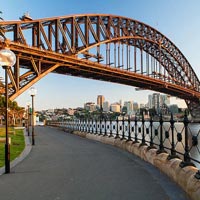 18D/17N
18D/17N
Amazing Australia with Newzealand Tour
Brisbane - Sydney - Rotorua - Christchurch
 18D/17N
18D/17N
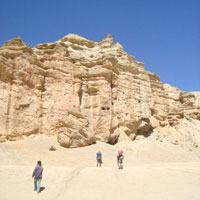 18D/17N
18D/17N
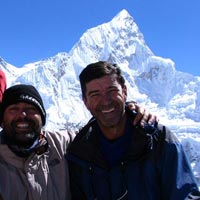 18D/17N
18D/17N
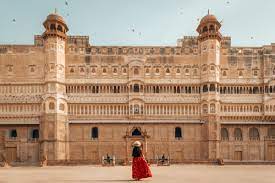 13D/12N
13D/12N
Rajasthan Tour Package 12 Night - 13 Days
Ajmer - Bikaner - Jaipur - Jaisalmer - Jodhpur - Mount Abu - Pushkar - Udaipur
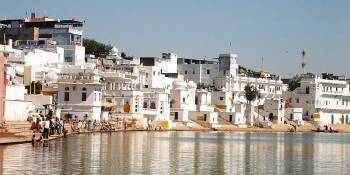 13D/12N
13D/12N
12 Nights Rajasthan Package From Jaipur
Ajmer - Bikaner - Jaipur - Jaisalmer - Jodhpur - Mount Abu - Pushkar - Udaipur
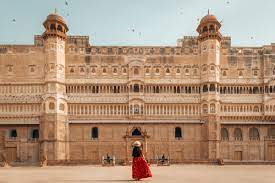 13D/12N
13D/12N
Rajasthan Tour Package 12 Night - 13 Days
Ajmer - Bikaner - Jaipur - Jaisalmer - Jodhpur - Mount Abu - Pushkar - Udaipur
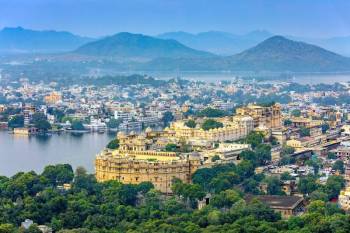 12D/11N
12D/11N
11 Nights 12 Days - Delhi Agra Rajasthan
New Delhi - Mathura - Agra - Jaipur - Ajmer - Pushkar - Udaipur - Mount Abu - Ranak..
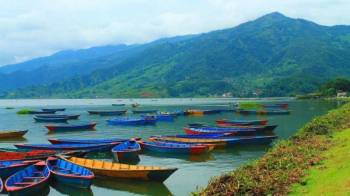 12D/11N
12D/11N
11 Nights - 12 Days Nepal Tour From Gora..
Prayagraj - Gorakhpur - Varanasi - Ayodhya - Kathmandu - Pokhara - Chitwan - janakpur
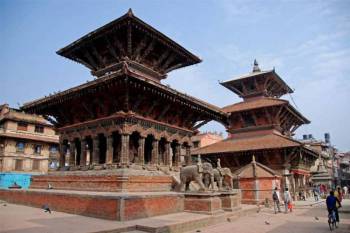 12D/11N
12D/11N
11 Nights - 12 Days Nepal Tour Package - 2
Prayagraj - Gorakhpur - Varanasi - Ayodhya - Kathmandu - Pokhara - Chitwan - janakpur
 12D/11N
12D/11N
Prayagraj - Varanasi - Bodhgaya - Ayodhya - Pokhara - Chitwan - Parsa
 12D/11N
12D/11N
11 Nights - 12 Days Nepal Tour From Gora..
Prayagraj - Gorakhpur - Varanasi - Ayodhya - Kathmandu - Pokhara - Chitwan - janakpur
 10D/9N
10D/9N
9 Night - 10 Days Rajasthan Tour Package
Ajmer - Jaipur - Jaisalmer - Jodhpur - Mount Abu - Udaipur